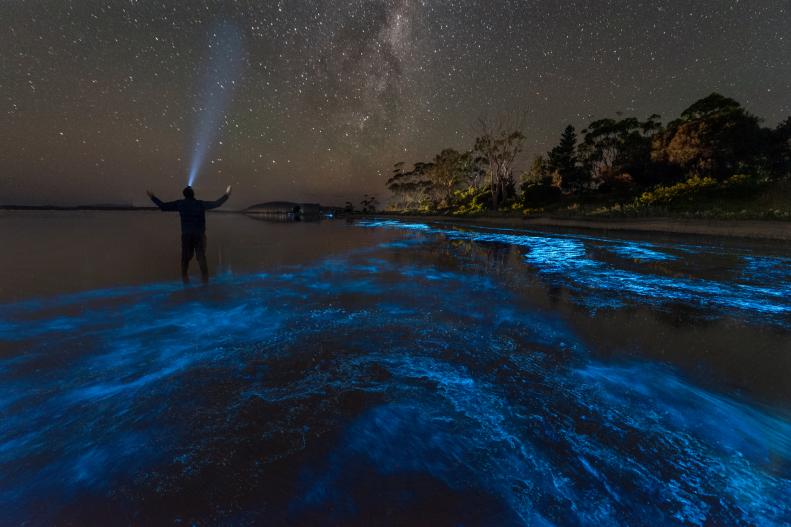Tasmania, Australia
Bioluminescence is a natural phenomenon produced by oceanic organisms like dinoflagellates when they're disturbed by movements in the water. Chemical reactions inside their bodies emit this cool blue or greenish light. "The bioluminescence is actually the defense mechanism of microscopic phytoplankton called dinoflagellates," says Josh Myers, operations manager at Florida Adventurer. The bright flash is meant to scare off predators.
You can see bioluminescence all over the world, but you have to look in the right places at the right times — usually mid to late summer. Dark or cloudy nights are the best times to see bioluminescence.
Bioluminescent tours and experiences are trending, so read on to find out where you can make a spectacular selfie when you wade into glowing waves under the Milky Way as seen here in Tasmania.
Before you travel, check for possible COVD-19 restrictions or closures.









